A couple of years ago, Markéta started the Xiphophorus – Northern Platyfish project. This turned out to be successful. The three species are maintained in aquaria and are doing well. More people are getting involved and keeping and breeding the fish doesn’t seem to be a problem. The number of breeders and fish is increasing.
Of course the northern platies are not the only species of the genus Xiphophorus that need our attention. More and more species are threatened in the wild. Those species with a large natural habitat, like Xiphophorus hellerii and X. maculatus, might not really need our concern at the moment. But things can change if some new (cryptic) species are described from within the large area where they live. Other species that inhabit a restricted area are considered vulnerable at least. At the combined GWG and XWG meeting in Ostrava in 2021 we concluded that it is necessary to get an overview of the species and populations of Xiphophorus that we keep in Europe before we take further steps. In this article I give an overview of the results of the inventory.
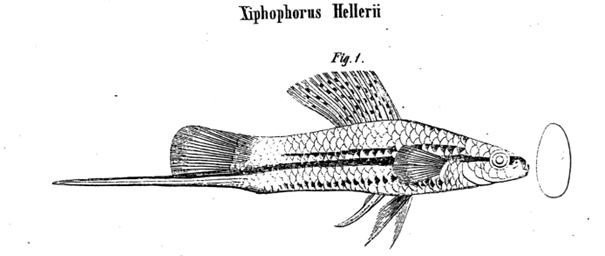
To get the information I contacted several organisations and people around Europe. I got information from the BLA, the Czech Republic, DGLZ, France Vivipare, Hungary, Poecilia Nederland, Poecilia Scandinavia, and the VDA. I would like to thank them for their cooperation in this project. Of course, the quality of the data is not certain. It is not sure if all the data are still correct. It seems that not all the lists are updated on a regular basis. The names of the populations have a lot of diversity. Sometimes it is easy to get the right name back, but this is not always the case. It also depends on the details that are kept in the population name. Sometimes also the year of the collection, the collecting party and more details on the location than just the name is mentioned. But this is not always the case. Some species are known from only one location, but in the list, you can find some variety in the description. I didn’t take the liberty to combine a lot of locations.
Of course, there are also a lot of cultivated forms that have their origin in Xiphophorus. They are not included in this list. Preserving those fish is a different project. Conservation of breeding forms is a neglected issue. If you compare this with other domesticated animals, fish lovers seem to neglect this subject. But let us first make sure that we do what we can for the wild strains.
Strain = a species with a location
Breeding unit = one strain kept by one breeder
In the pie chart below you can see the distribution of the breeding units per group (i.e. country or association). It doesn’t say anything about the amount of people that keep the fish. Some people might have a lot of strains and other only one. In total there are 551 breeding units:
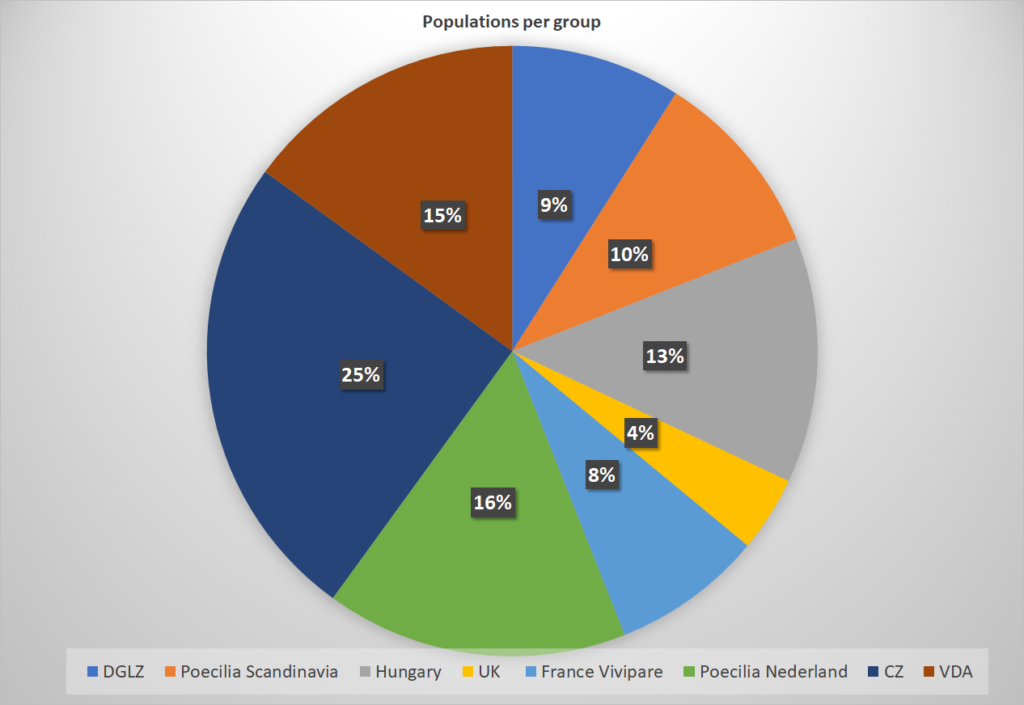
In the graphic below you can see the amount of breeding units per species. As you might expect most units belong to the green swordtail (X. hellerii). The most popular population is the red Yucatan population. The variable platy (X. variatus) is second with most popular populations La Laguna and Tampico.
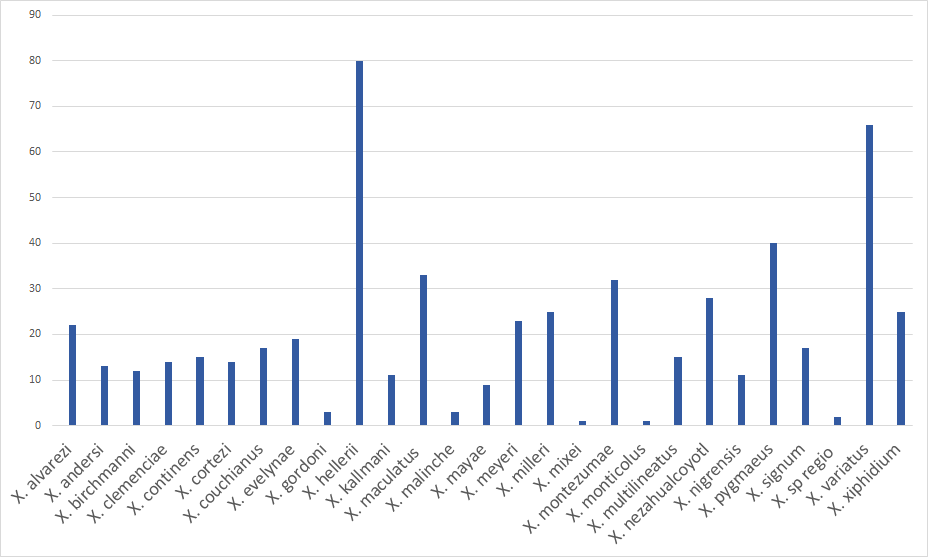
Other species are not kept that often. According to the registration there are only a few people who maintain the threatened X. gordoni. The in 2004 described X. mixei and X. monticolus have not been imported often, which may be the reason that hardly anyone is breeding these species. Although this is not the case with X. malinche, this species is neither kept by many breeders. Would the fact that this species needs a low temperature make it so difficult to maintain? Maybe keeping the species outdoor during the summer is a solution? X. sp.”Regio” might not be a real species. I don’t have enough information on the status of this fish to make some remarks.
Overall it looks like we are maintaining most of the Xiphophorus species in Europe. Some strains have been in the hobby for years and seem to adapt very well. Other ones are new and time will tell if they will stay in our aquariums for a long time.
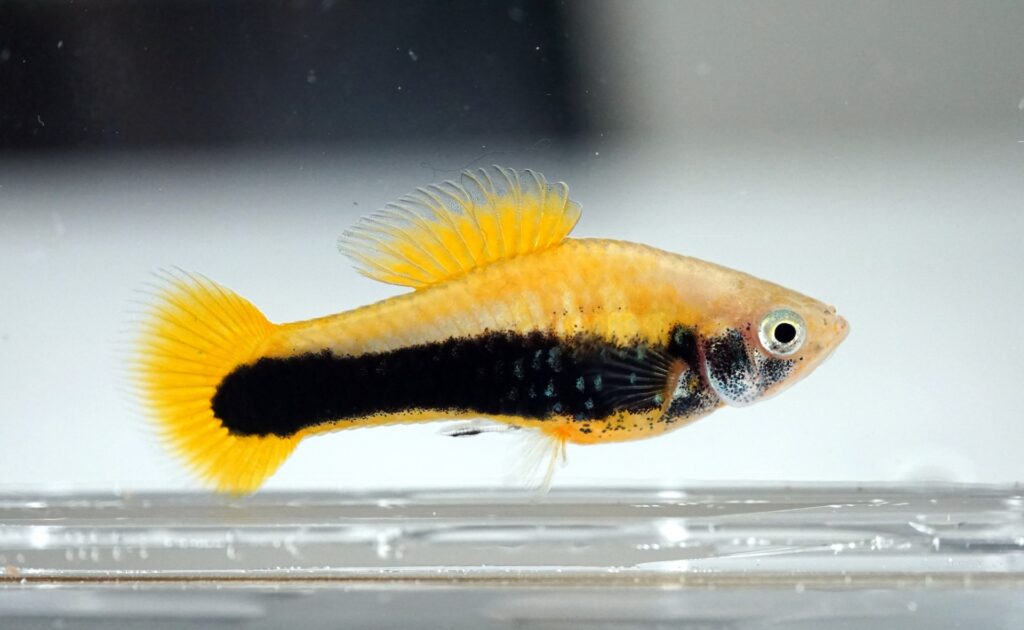
Discussion
There are several things that we should discuss in the XWG. I mention a few to start the discussion:
- Are we going to propose a way to describe the location? I know this has been a subject for discussions many times already.
- How far do we want to go with exchanging fish? Are we going to use ESU’s like the GWG does?
- Should we try to get more breeders for some of the species that are only maintained by a few people? These are also the species that have a small habitat and might be considered at least vulnerable. Maybe we can do it in the same way as in the Northern Platyfish project? Who is going to do it?
- It would be helpful if we could get a kind of HQ in Mexico like the GWG have with the university of Morelia. Is there a possibility to do this? How important it is?
- Fresh blood is a very often mentioned subject. Are we going to have more controlled exchange of fish between breeders and is this useful? Having a look at the colours of a platy strain in nature and the same strain 10 years later in the aquarium, it makes it clear that we are losing traits from the original strains. Introducing wild fish to an aquarium strain is not a good idea. You should keep the new fish separated. Should we get more wild strains or stick with what we have and exchange these?
These are just a few of the points we have to discuss. I think we have a lot of nice fish in our tanks. They are called grey fish on some T-shirts, but everyone who keeps them knows better. Most of the Xiphophorus species are lovely fish. I mean 551 wild breeding units makes it clear that people love them.
A good overview of all the breeding units we have is a good starting point to see which strains need some extra support. They are worth it.
 Xiphophorus clemenciae is of hybrid origin. This also applies to its close relative X. monticolus. (Photo: Juan Carlos Merino)
Xiphophorus clemenciae is of hybrid origin. This also applies to its close relative X. monticolus. (Photo: Juan Carlos Merino)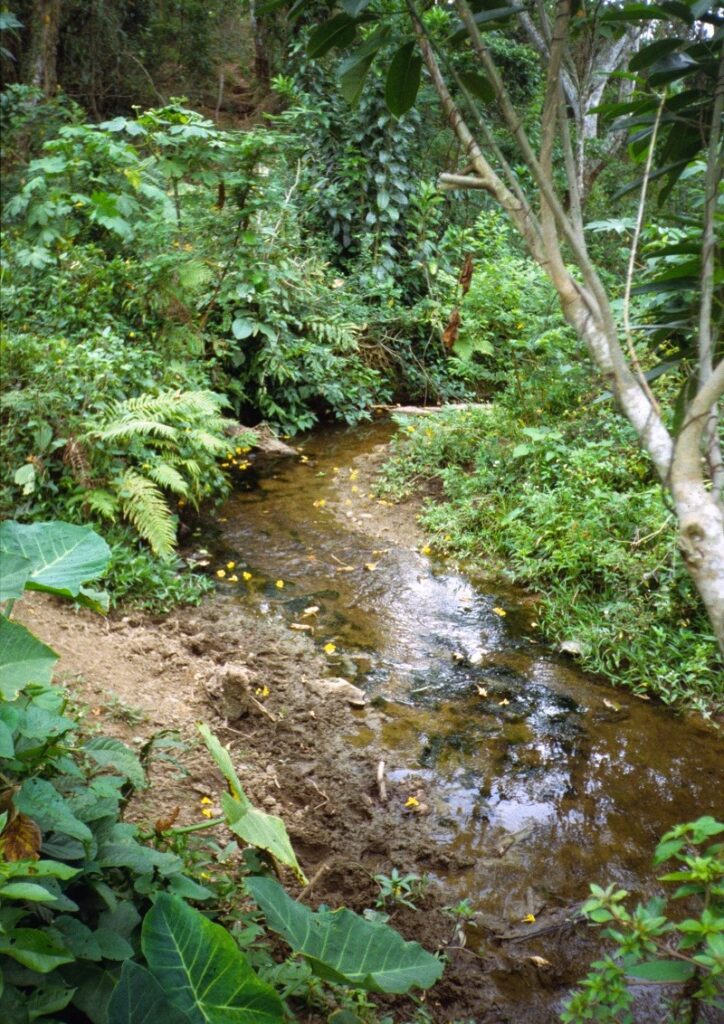 Puente Chino Luiz is one of the places where X. clemenciae can be collected. In the same place you can find Poeciliopsis gracilis, Poecilia cf. sphenops, Xiphophorus hellerii and Priapella intermedia. (Photo: Kees de Jong)
Puente Chino Luiz is one of the places where X. clemenciae can be collected. In the same place you can find Poeciliopsis gracilis, Poecilia cf. sphenops, Xiphophorus hellerii and Priapella intermedia. (Photo: Kees de Jong)
We will publish the detailed data only after the nomenclature has been reviewed and corrected. A dedicated task force is already working on this, but if you want to help us, please contact us.
